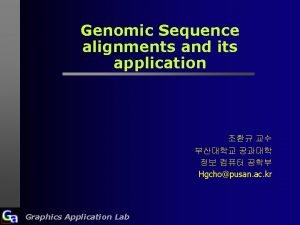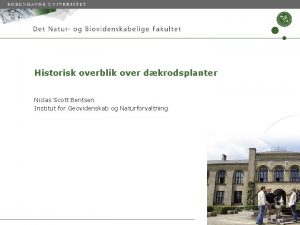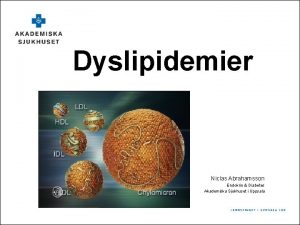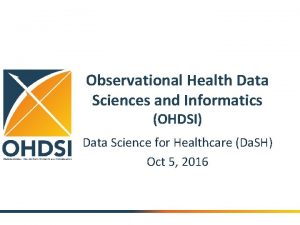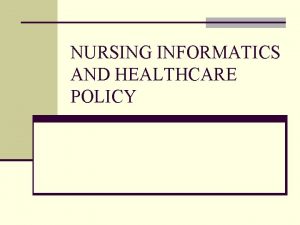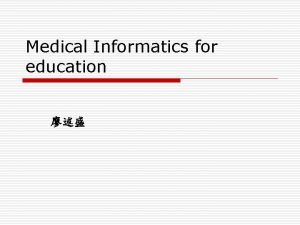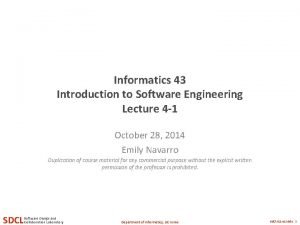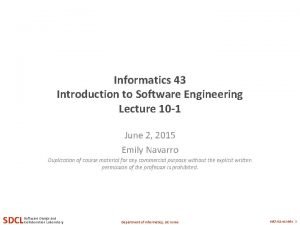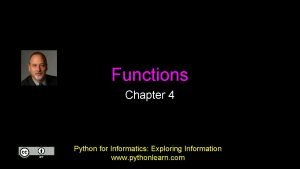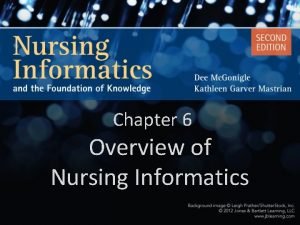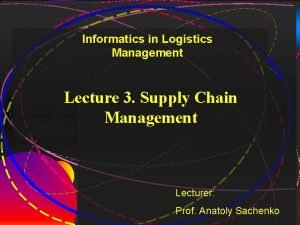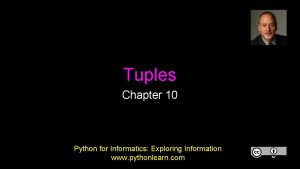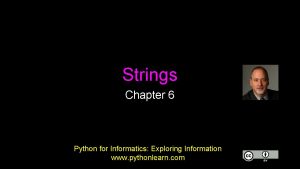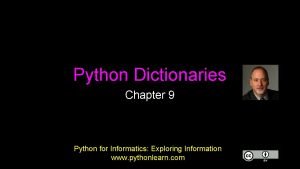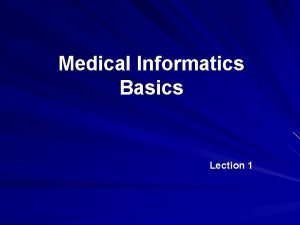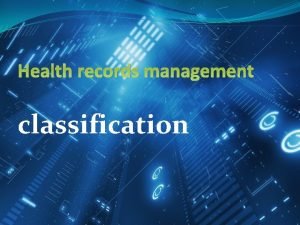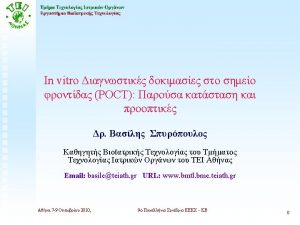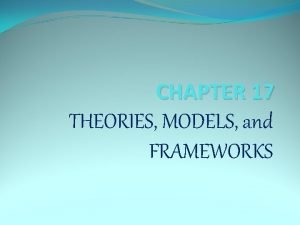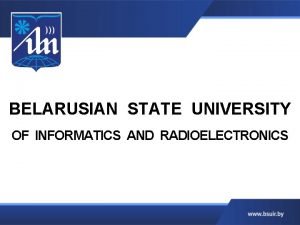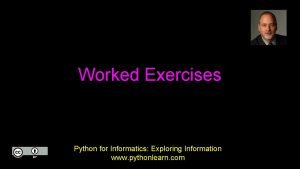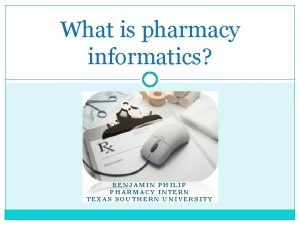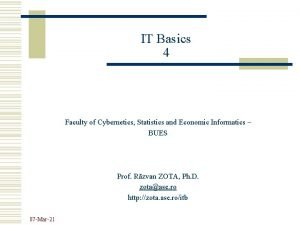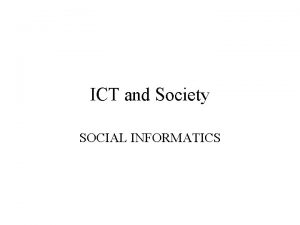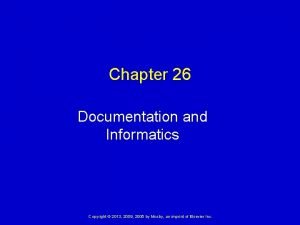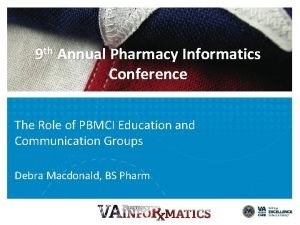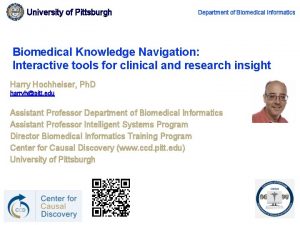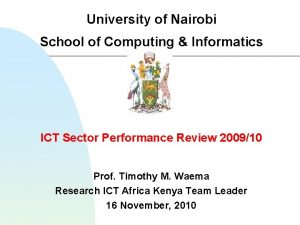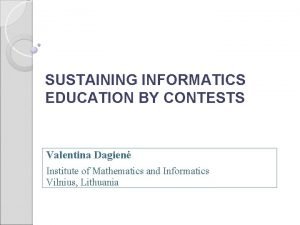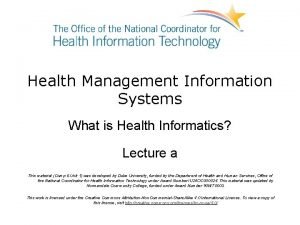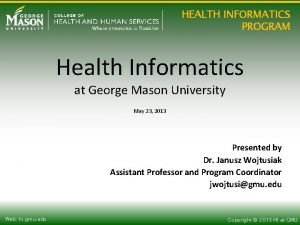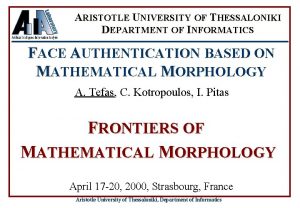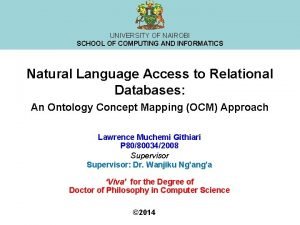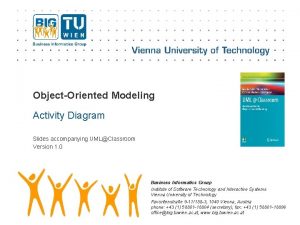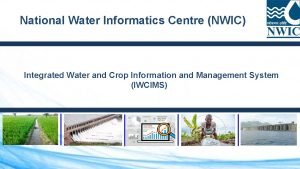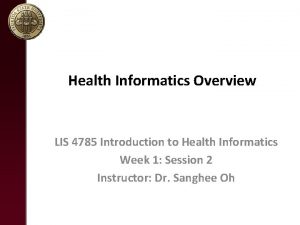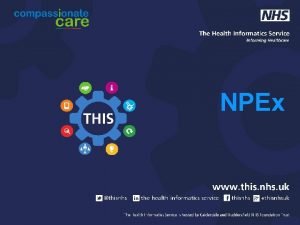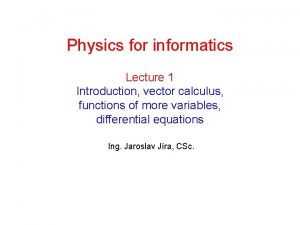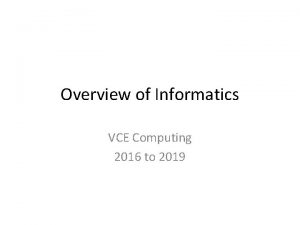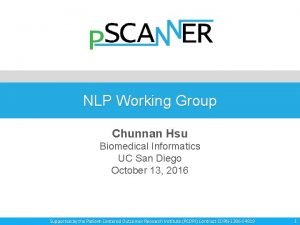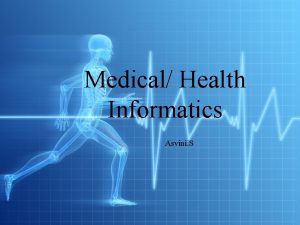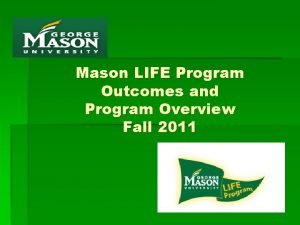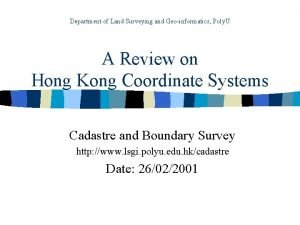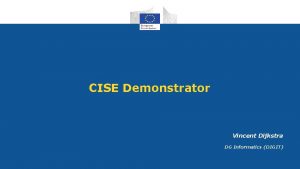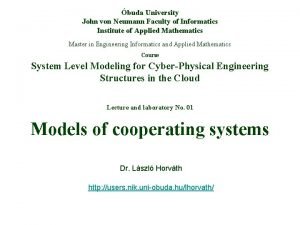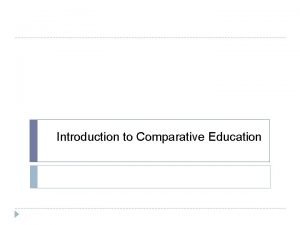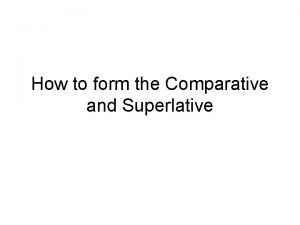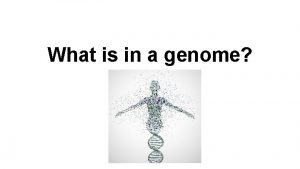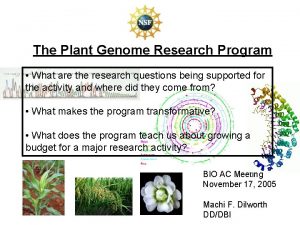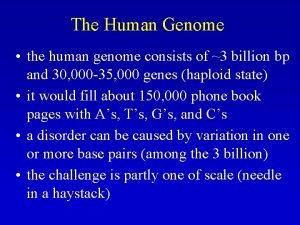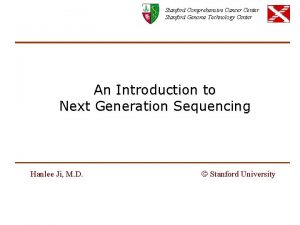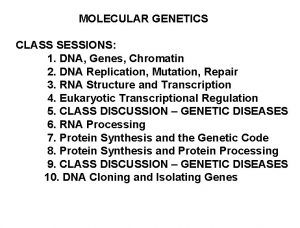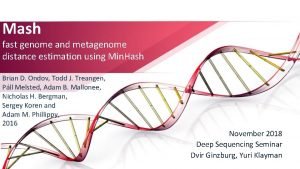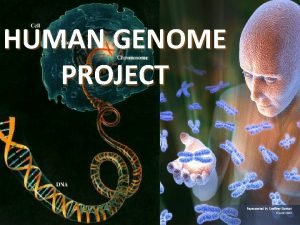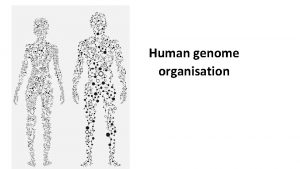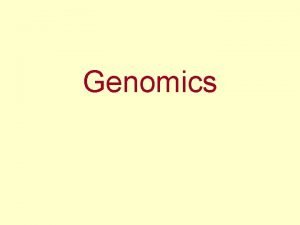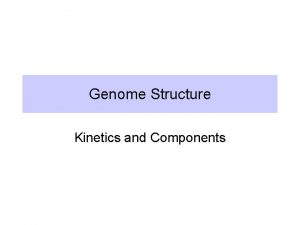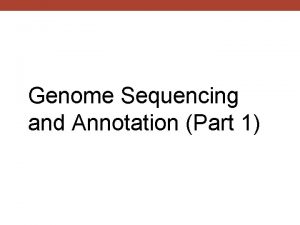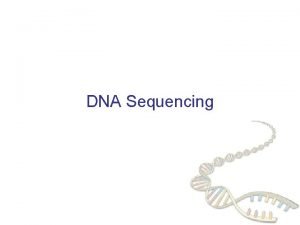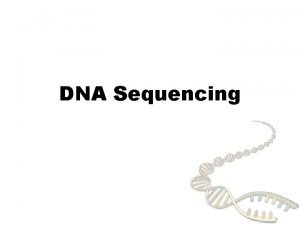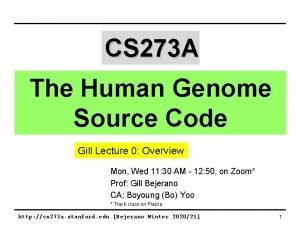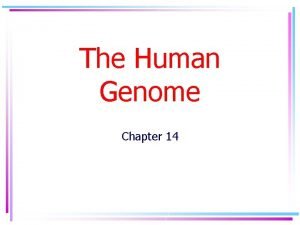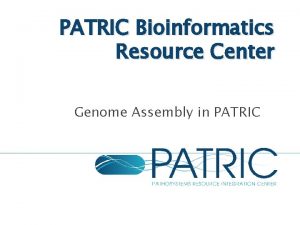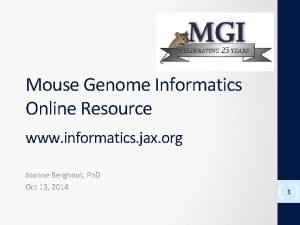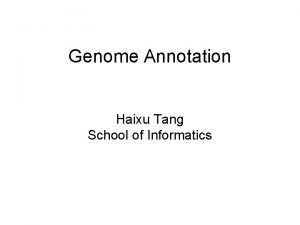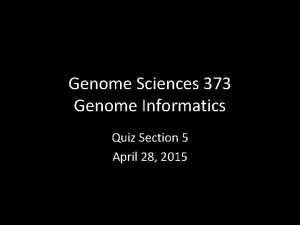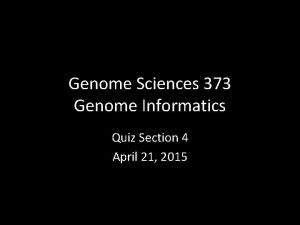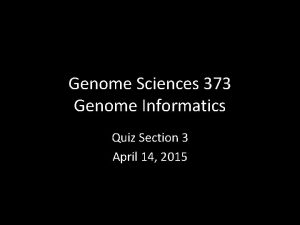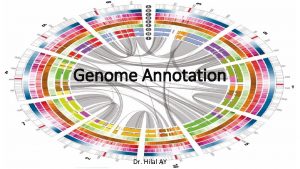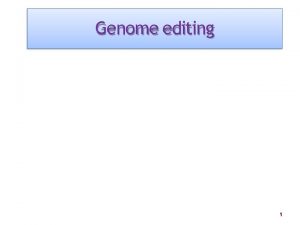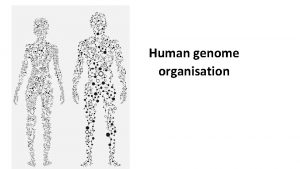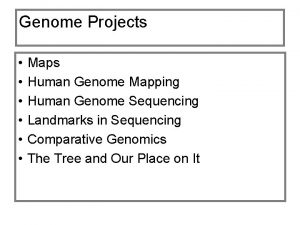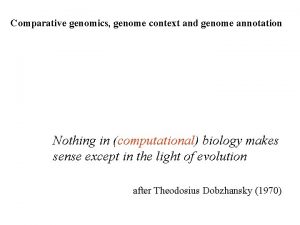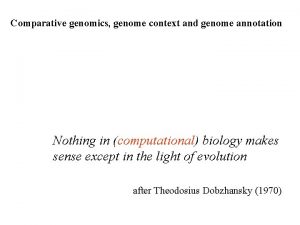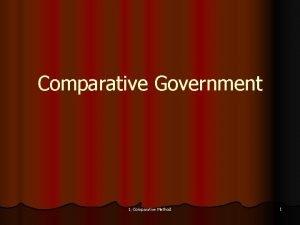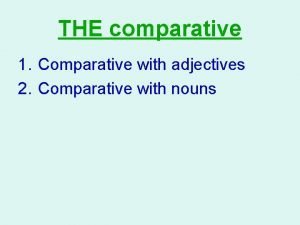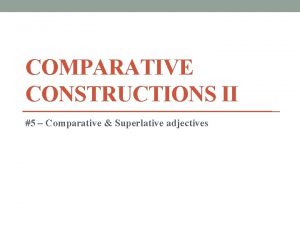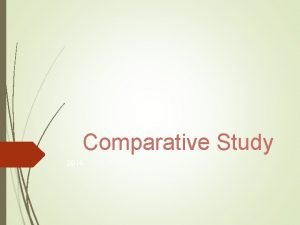Genome Sequence Informatics Comparative Genome Sequence Analysis Niclas











































































- Slides: 75

Genome Sequence Informatics & Comparative Genome Sequence Analysis Niclas Jareborg Astra. Zeneca R&D Södertälje

Genome sequencing projects • Aim: Better understanding of biology • Bioinformatics • Manage data • Cut corners • Generate and test new hypotheses • Make the most of the data • comparative analysis

gttaaaattcagcagaatgaaaatgtcaataattttttattt taaaatattcatgttttactattttgatataatttttaaagaaaaaggca gaaaccactgcttattagaaggcagattttattgattttatacccctaga Where are the functional elements? cttgttgcatatcaaacctatgtaaaaacatctataaatcattaa ttgcacctagtataataattctatatatggaggtaatgtttgattcttca ggagctttaataacttgaagcccgtttgattgctttaaaatgatttctca ttgtatttgtttatattgtatcattaagcaaaagtacagagtaagcaatt agtgtgattaattcctcttccataatacagtaaagcactgcctccataga ccaattctctgggatccctggaaaacatctggcatccagcaagtcttgac ccctctttagaaagccatggagaaactggaggcaattctgttaattattt gccctctagaggcaattgggttaattacccttccctatccatgaca caatttctccagttacatgtagaatgctgttatgtgtctcctgaccagac cccttatttcatagatgtggaaactgaggccatgaaggatgaggtgactg ttcacaatccacatggctagtgtccagagcctggacttctc tcttgttctggggccttgagttctctccctcttctttagtacatatggcc acaggtaacgtaatctgcgtaccacatttggagtgcatctgttt tgcatttaatcttgttgagatggtttgcttgttgacctactcagtc agttatcttttcacctttgtgagttgagagctttgtgtattaaatctgta aaactttgcatcgtggaaagtgacataatctgtagcagacccatgctgtt

Features in genome sequences • Genes • Exons, introns, promoters • RNA genes • Cp. G islands • Enhancers • Other functional elements • e. g. Replication origins, Nuclear matrix association • Repeats

How to find genomic features • Repeats, Cp. G islands, RNA gene • Bioinformatics programs • Genes • Homology to known sequences • Bioinformatics prediction programs • Transcription regulatory regions • Bioinformatics prediction programs

Finding genes by homology • Database searches – BLAST, BLAT, SSAHA • EST and c. DNA sequences • Protein sequences High accuracy, misses unknown sequences • caveat: junk EST sequences

Genewise (Birney & Durbin) Alignment of DNA to protein (or HMM) allowing for splicing Uses dynamic programming with extra states for introns

-20 bp pkinase. hmm HSU 71 B 4 1 YELGEKLGEGA GKVYKAKHK---TGKIVAVKILKKESLSLL REIQI ++ LG + G+ Y+A + ++I+ + +K + + + E+ + INIKNLLGGDT GCLYMAPKVQATKQQIYKLCFIKIKTFVLQ TELNL -27753 aaaaactggga. GTGTGAGTA Intron 1 CAGTgtttagcagcgaaccatatttaaaaatgcc. AGGTCACTA Intron 2 CAGGagcac tataattggac <2 -----[27718: 22469]-2> ggtatccataccaaataatgttatacttta <2 -----[22375: 21185]-2> catat atcatggtata acatgaaaaattagcctaaattgta tacct - 6 bp +3 bp 45 LKRLN-HPNIVRLLGVFED-----SKDHLY LVLEYMEGGDLFDYLRRKG--PLSEKEAKKIALQILR L++++ H+NIV ++G+F L+ +V+E++ G+ D++R+ L E+++ +I ++IL+ LRKYSFHKNIVSFYGAFFKLSPPGQRHQLW MVMELCAAGSVTDVVRMTSNQSLKEDWIAYICREILQ -21168 caatttcaaagtttggttacaccgccccct. GTATGTT Intron 3 CAGagagttgggtgagggaaaaacataggtagtatcgacc tgaactaaattctagcttatgccgagaatg<0 -----[21078: 15667]-0>tttatgccgctcattgtcgaagtaaagtcatggatta gggctccactgcctaatcggtcttggcatg ggggataatgcttagagcttgtaaatgtttccaactg 104 - 66 bp - 8 bp +12 bp - 1 bp GLEYLHSNGIVHRDLKPENILLDENGTVKI DFGLAKLLK-SGEKLTTFV GL++LH ++++HRD+K +N+LL++N VK+ DFG++++++F+ GLAHLHAHRVIHRDIKGQNVLLTHNAEVKL DFGVSAQVSRTNGRRNSFI -15555 GTGAGTC Intron 4 CAGgtgcccgccgaagcagccacagggac. GGTAAGTT Intron 5 CAGTTgtggagcgaaaata <0 -----[15555: 14066]-0>gtcatacagttagaatttcaacatat <1 -----[13974: 10915]-1> atgtgcatggcagggagtt catctcacaatcgccatgtgggttttaaag ttagtcggcattaagttct 0 bp - 3 bp -1 bp +2 bp 153 GTPWYMMAPEVILKG-----RGYSTK VDVWSLGVILYELLTGKL FPG-D GTP++M APEV + R Y+ + +DVWS+G++ +E++ G + + GTPYWM-APEV-IDCDEDPRRSYDYR SDVWSVGITAIEMAEGAP LCNLQ -10855 gactta gcgg agtgggcacttgta. GTGAGTG Intron 6 CAGaggttggaagagaggggc. CGTGAGTA Intron 7 CAGCTctacc gccagt ccat tagaaacggcaaag<0 -----[10783: 8881]-0>gatgctgtcctatcagcc <1 -----[8825 : 4234]-1> tgata gaacgg atgg tcttgcaaccttca ttggtgattctagtaact gtcta +1 bp 196 PLEELFRIKKRLRLPLPPNC SEELKDLLKKCLNKDPSKRPTAKELLEHPW PLE+LF I+++ ++ S+ + +++KC K+ RPT +L+HP+ PLEALFVILRESAPTVKSSG SRKFHNFMEKCTIKNFLFRPTSANMLQHPF -4214 ctggctgatcgtgcagatag. TGGTAAAGA Intron 8 TAGGtcatcatagataaaatctccatgaacccct ctactttttgacccctacgg <2 -----[4154 : 3085]-2> cgataattaagctaatttgccccattaact cgatccttggattcacacca ctgcctcgagtgaatcgtttttacgtacat

Gene prediction methods • • • ATGs Stop codons ORFs Coding preference Splice sites easy hard • profiles, statistical methods, neural networks etc. High coverage, low accuracy

Accuracy of gene-finding programs for 1. 4 MB genomic region BRCA 2 on human chromosome 13 q Region includes 159 true exons fgenesh. masked fgenesh fgenes. masked fgenes genscan fgeneh mzef NE 169 190 238 281 292 381 623 fgeneshm+genescan fgeneshm+fgenes 118 89 exact N acc 110 0. 65 109 0. 57 103 0. 43 104 0. 37 105 0. 36 68 0. 18 95 0. 15 match cov 0. 69 0. 65 0. 66 0. 43 0. 60 97 0. 82 0. 61 83 0. 93 0. 52 overlap N acc 125 0. 74 126 0. 66 132 0. 55 136 0. 48 129 0. 44 101 0. 27 122 0. 20 exons cov 0. 79 0. 83 0. 86 0. 81 0. 64 0. 77 106 0. 90 0. 67 86 0. 97 0. 54 5'N 118 117 114 116 79 106 splice site acc cov 0. 70 0. 74 0. 62 0. 74 0. 48 0. 72 0. 41 0. 73 0. 40 0. 73 0. 21 0. 50 0. 17 0. 67 101 0. 86 0. 64 86 0. 97 0. 54 3'N 116 117 118 120 115 87 107 splice site acc cov 0. 69 0. 73 0. 62 0. 74 0. 50 0. 74 0. 43 0. 75 0. 39 0. 72 0. 23 0. 55 0. 17 0. 67 101 0. 86 0. 64 83 0. 93 0. 52 acc - specificity (true predicted/all predicted) cov - sensitivity (true predicted/true) NE - number of predicted exons data provided by Tim Hubbard and Richard Bruskiewich (Sanger Centre)

Repetitive elements 1/3 of the human genome • Transposable elements • LINEs (Long Interspersed Nuclear Elements), 6 -8 kb • SINEs (Short Interspersed Nuclear Elements, e. g. Alu), 100400 bp • Retrovirus-like elements, 1. 5 -10 kb (LTRs 300 -1000 bp) • DNA transposons, 80 bp-3 kb • Tandem repeats • Simple repeats/Microsatellites (1 -5 bp)n, e. g. caacaacaa • Minisatellites (6 -1000 s bp)n • Low complexity regions •

Repeat masking • Repeats disturb analysis • Homology searching • Gene prediction • Masking exchange repeat region with N's. Will be ignored by analysis programs • Repeat. Masker (Smit & Green) • LINEs, SINEs, LTR transposons, DNA transposons, Simple repeats, Low complexity regions • trf (Benson) • Tandem repeats

Predicting regulatory regions • Transcription Factor Binding Sites (TFBSs) have very low information content • Given a long enough sequence a binding site will be predicted • Combination of TFBSs • Even the best algorithms will overpredict

Cp. G islands • Associated with transcribed genes • House keeping genes + ~50% of other genes • Often in 5' ends of genes • >200 bp • GC content >50% • obs/exp Cp. G >0. 6

Gene Ontology “Biologists would rather share a toothbrush than a gene name” - Michael Ashburner • “Controlled vocabulary that can be applied to all organisms even as knowledge of gene and protein roles in cells is accumulating and changing. ”

Gene Ontology • Organizing principles • Molecular function • Biological process • Cellular component • Hierarchical structure

Genome resources • Genome sequence centered • Ensembl • http: //www. ensembl. org • NCBI • http: //www. ncbi. nlm. nih. gov • UCSC Human genome browser • http: //genome. ucsc. edu • All based on NCBI assembly • Gene centered • SOURCE • http: //source. stanford. edu • Gene. Lynx • http: //www. genelynx. org • Gene. Cards • http: //bioinformatics. weizmann. ac. il/cards/

Ensembl

Ensembl – Map view

Ensembl – Contig view

Ensembl – Contig view

Ensembl – Gene view

Ensembl – Gene view

Ensembl – Gene view

NCBI Genome resources

NCBI Map View

NCBI Locus Link

NCBI Sequence view

UCSC – Genome browser

UCSC – Genome browser

UCSC – Genome browser

Gene-centered resources • • • Genomic resources Transcripts Protein sequences Protein structure and domains Protein function and disease links Homologs Functional/GO classifications Physical clones etc

Comparative Genomic Sequence Analysis • Aid in finding functional regions • Coding regions • Regulatory regions

Comparative Genomic Sequence Analysis • Compare corresponding genomic sequences from different species • Potential protein coding and/or regulatory regions can be identified by their conservation • “Phylogenetic footprinting”

Why it works

Synteny maps • Maps corresponding regions in different genomes • Large-scale relationships • Based on • genetics • sequence • Available for • Human vs. • • • Mouse Rat Dog Chimp etc… Mouse vs Rat

Ensembl synteny views • Protein sequence based

NCBI comparative maps • Based on genetics • Several genetic maps

Human/vertebrate sequence comparisons (80 -450 Myrs) • Coding sequences generally well conserved • Non-coding regions show highly variable levels of conservation • Conservation of non-coding regions imply a functional role • • • promoters other transcriptional regulators replication origins chromatin condensation matrix association

Model organisms for vertebrate comparative analysis Not too evolutionary close • Impossible to identify functional regions through conservation • Mouse 3000 Mb 80 Myrs w Genetics w Sequence ”finished” • Chicken 1200 Mb 300 Myrs w Micro-chromosomes (~75% of genes) w Prioritized for sequencing • Fugu (Puffer fish) 400 Mb 450 Myrs w Small genome, shorter introns and intergenic regions w More or less the same gene content as higher vertebrates w Sequence finished •

What are we comparing? • Homologue • common ancestor, may have similar function • Orthologue • the “same” sequence, generated by a speciation event, probably same function • Paralogue • similar sequence within species, generated by a gene duplication event, may have similar function

Globins (I)

Globins (II)

Finding conserved regions • Dot plot • Dotter • Similarity search programs • Blast • Alignment programs • • • DBA (Jareborg et al) blastz (Schwartz et al. ) Dialign (Morgenstern et al. ) WABA (Kent & Zahler) Avid (Bray et al. ) others

Dotter (Sonnhammer & Durbin) • Graphical dot plot program for detailed comparison of two sequences • Features • • • dynamic greyscale ramp for stringency cut-off alignment viewer zooming. • Unix & Windows • http: //www. cgb. ki. se/cgb/groups/sonnhammer/Dotter. html


DBA (Jareborg, Birney & Durbin) • DNA Block Aligner • Finds co-linear blocks with high similarity • Does not try to align the sequences between these blocks • Divides blocks into four different categories • approx. 60 -70%, 70 -80%, 80 -90%, 90 - 100%

Comparison-based functional prediction • Gene prediction • Regulatory region predictions

”Comparative” gene prediction programs • Twinscan • Doublescan • SGP-1 http: //genes. cs. wustl. edu/ http: //www. sanger. ac. uk/Software/analysis/doublescan/ http: //195. 37. 47. 237/sgp-1

Regulatory region prediction • Consite • Detection of TFBS conserved in corresponding genomic sequences from different species www. phylofoot. org/consite

Con. Site

Visualisation • Easier to grasp large data volumes • Programs • Dot plot (e. g. Dotter) • PIP • Alfresco • VISTA • Genome comparative resources • VISTA genome browser • UCSC • Ensembl

PIP - Percent Identity Plot Oeltjen et al. (1997) Genome Research 7: 315

Alfresco Tool for comparative genome sequence analysis • Over-all control of comparative analysis • Display and summarize results from external analysis programs Jareborg & Durbin Genome Research 10: 1148– 1157

Alfresco Features • Interactive graphical interface • Uses external programs for analysis • • Dotter - interactive dotplot program Blastn alignments - finds conserved blocks DBA - detects and aligns conserved blocks Cpg - detects Cp. G islands Repeat. Masker - identifies repeats Genscan - gene prediction Gene. Wise - gene prediction using homologous protein sequence est_genome - gene prediction using homologous RNA sequence

Alfresco


Vista Genome Browser • Human – Mouse - Rat comparisons • VISTA viewer • http: //pipeline. lbl. gov/

VISTA genome browser

UCSC Genome browser • Human - Mouse • Twinscan predictions • Conservation profiles • Quantitative

Ensembl contig viewer • Human-Mouse match locations • Qualitative • Twinscan predictions • Move between Human and Mouse contig views

Comparative Analysis Examples • Interspecies non-coding regions conservation • Coding region predictions • Regulatory region predictions

Comparative Analysis of Noncoding Regions of 77 Mouse and Human Gene Pairs Jareborg, Birney, and Durbin. (1999) Genome Research 9: 815 • How conserved are non-coding regions between mouse and human? • Measure of conservation? • % identity • fraction conserved

A “typical” intron

mouse/human data set • Genomic sequences from the EMBL database containing 78 pairs of mouse-human orthologous genes • Features as defined in feature tables • Corresponding features aligned with DBA: • Fraction covered by blocks >60 % identical: • Upstream regions: 36 % • 5’ UTRs: 49 % • Introns: 23 % • 3’ UTRs: 56 % • Sizes: Jareborg, Birney & Durbin. Genome Research 9: 815 -824 • 20 - 700 bp


Analysis example - coding region prediction UTY

Analysis example - cont.

Analysis example - Regulatory regions • BTK - Bruton’s Tyrosine Kinase • agammaglobulinemia • Expression • early stages of B-cell differentiation • myeloid cell lines • not in T cells

BTK region PIP Oeltjen et al. (1997) Genome Research 7: 315

Alfresco - BTK 5’end

Promoter constructs T-cell B-cell myeloid 2. 5 kb conserved region in first intron contributes to cell-lineage specific expression Oeltjen et al. (1997) Genome Research 7: 315

Comparative Analysis Issues for the future • Faster/better algorithms for aligning vertebrate genomes • Multiple alignments • Comparing several species can give clues to which regulatory sequences are of a basic nature, and which are lineage specific • Cataloguing of comparative data • Better visualisation • Whole syntenic region <> nucleotide level • Multiple genome sequences

Future Issues - cont. • Genome evolution • macro scale • molecular evolutionary rates • repeats • Transcriptional regulatory regions • definition/modelling • identification of combinations of conserved TFBSs coupled with gene expression data • prediction

Fin
 Semi-global alignment
Semi-global alignment Niclas scott bentsen
Niclas scott bentsen Niclas abrahamsson uppsala
Niclas abrahamsson uppsala Observational health data sciences and informatics
Observational health data sciences and informatics Nursing informatics and healthcare policy
Nursing informatics and healthcare policy Introduction to medical informatics
Introduction to medical informatics Emily navarro uci
Emily navarro uci Informatics 43 uci
Informatics 43 uci Supply chain informatics
Supply chain informatics Python for informatics
Python for informatics Metastructures of nursing informatics
Metastructures of nursing informatics Supply chain informatics
Supply chain informatics Python for informatics: exploring information
Python for informatics: exploring information Python for informatics
Python for informatics Python for informatics
Python for informatics Medical informatics definition
Medical informatics definition Health informatics
Health informatics Poc informatics
Poc informatics Nursing informatics theories, models and frameworks
Nursing informatics theories, models and frameworks Belarusian university of informatics and radioelectronics
Belarusian university of informatics and radioelectronics Python for informatics
Python for informatics What is pharmacy
What is pharmacy Cybernetics statistics and economic informatics
Cybernetics statistics and economic informatics Social informatics definition
Social informatics definition Chapter 26 informatics and documentation
Chapter 26 informatics and documentation Personal traits for health informatics services workers
Personal traits for health informatics services workers History of pharmacy informatics
History of pharmacy informatics History of pharmacy informatics
History of pharmacy informatics Biomedical informatics definition
Biomedical informatics definition Va office of health informatics
Va office of health informatics Pitt health informatics
Pitt health informatics School of computing and informatics
School of computing and informatics Olympiad in informatics
Olympiad in informatics Goals of nursing informatics
Goals of nursing informatics Hong kong olympiad in informatics
Hong kong olympiad in informatics Definition of health management information system
Definition of health management information system George mason health informatics
George mason health informatics Health informatics courses uk
Health informatics courses uk Health informatics career framework
Health informatics career framework Financial informatics
Financial informatics Vtsdb
Vtsdb School of computing and informatics
School of computing and informatics Activity slides
Activity slides Iwcims
Iwcims Journal of american medical informatics association
Journal of american medical informatics association What is informatics
What is informatics Npex lims
Npex lims Vector calculus definition
Vector calculus definition Informatics vce
Informatics vce Ucsd nlp
Ucsd nlp Health informatics ryerson
Health informatics ryerson Gmu health informatics
Gmu health informatics Poly survey
Poly survey Dg informatics
Dg informatics Health informatics in saudi arabia
Health informatics in saudi arabia Jnfi
Jnfi What is comparative education
What is comparative education Comparative form examples
Comparative form examples Causal-comparative/quasi-experimental research
Causal-comparative/quasi-experimental research Genome is
Genome is Plant genome research program
Plant genome research program Euphenics
Euphenics Stanford genome technology center
Stanford genome technology center Human genome size
Human genome size Mash genome
Mash genome Human genome size
Human genome size Human genome features
Human genome features Genome organization
Genome organization Perpartes
Perpartes Human genome structure
Human genome structure Hierarchical shotgun sequencing vs whole genome
Hierarchical shotgun sequencing vs whole genome Shotgun sequencing
Shotgun sequencing Dna
Dna Human genome project source code
Human genome project source code Sickle cell karyotype
Sickle cell karyotype Patric bioinformatics
Patric bioinformatics
